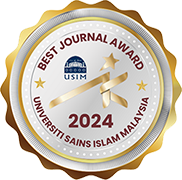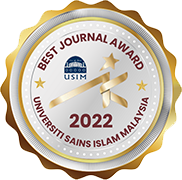THE LEGAL PROTECTION OF ATYPICAL WORKERS IN INDUSTRY 4.0
DOI:
https://doi.org/10.33102/mjsl.vol8no2.220Abstract
The Industry 4.0 or the Fourth Industrial Revolution has provided a paradigm shift towards the way of work. The emergence of millennial groups that avoid attachment, give birth to a new working relationship called atypical work. This type of employment relationship means that the employment relationship between the employer and the worker without the existence of a long-term work contract, the provision of additional facilities, salaries and pensions, or other benefits that are usually obtained by typical workers. The atypical worker relationship is outside the context of the employment relationship as referred to in Law No.13 of 2003 on Employment. This study discussed about 1) What is the position of employers and workers in atypical work relations? 2) What is the legal protection for atypical workers in the Industry 4.0 in the future? This research is a normative legal research that examines the void of norms regarding legal protection of atypical workers. The legal material in this study consists of primary and secondary legal materials. The legal materials are collected through literature study. The problem analysis is done qualitatively. The position of employers and workers in atypical work relations is equivalent based on agreements made between the parties. This condition requires a high literacy of rights and obligations in the employment field. The legal protection for atypical workers in the Industry 4.0 in the future is to provide economic, social and technical protection to the workforce.
Downloads
References
Agusmidah. 2011. Dilematika Hukum Ketenagakerjaan; Tinjauan Politik Hukum, Cet. I. Jakarta: Sofmedia.
Asikin, Zainal. et.al. 2010. Dasar-Dasar Hukum Perburuhan. Jakarta: Rajawali Pers.
Aurachman, Rio. 2019. "Model Matematika Dampak Industri 4.0 terhadap Ketenagakerjaan Menggunakan Pendekatan Sistem. " Jurnal Optimasi Sistem Industri, 18(1), 14-24.
Bardazzi, Rossella, and Silvia Duranti. 2016. "Atypical work: a threat to labour productivity growth? Some evidence from Italy. " International Review of Applied Economics, 30(5), 620-643.
CIPD. (2019). Atypical working: a guide to successfully implementing atypical work in your organisation. Retrieved from https://www.cipd.co.uk/Images/7904-atypical-working-guide-web_tcm18-61555.pdf
Eurofound. (2019). Atypical work. Retrieved from https://www.eurofound.europa.eu/observatories/eurwork/industrial-relations-dictionary/atypical-work
Fajri, Deni Kusuma. 2019. "Profil Tenaga Kerja Milenial di Indonesia pada Era Revolusi Industri 4.0." Prosiding FRIMA (Festival Riset Ilmiah Manajemen dan Akuntansi), (2), 409-412.
Kontan. (2019). Kemnaker: Revolusi industri 4.0 menggeser 50% pekerjaan. Retrieved from https://nasional.kontan.co.id/news/kemnaker-revolusi-industri-40-menggeser-50-pekerjaan
Lingga, M.A. (2019). Milenial dan "Gig Economy" di Era Industri 4.0. Retrieved from https://ekonomi.kompas.com/read/2018/11/15/200900526/milenial-dan-gig-economy-di-era-industri-4.0?page=all.
Muh, Anggalih Bayu. Kamim, M. Rusmul Khandiq. 2019. "Gojek dan Kerja Digital : Kerentanan dan Ilusi Kesejahteraan yang Dialami Oleh Mitra Pengemudi Dalam Kerja Berbasis Platform Digital." Jurnal Studi Pemuda 8(1) http://doi.org/10.22146/studipemudaugm.45240
Pirani, Elena. 2017. "On the relationship between atypical work (s) and mental health: New insights from the Italian case." Social Indicators Research, 130(1), 233-252.
Putri, Hanifah Sartika & Amalia Diamantina 2019. "Perlindungan Hukum Terhadap Keselamatan dan Keamanan Pengemudi Ojek Online Untuk Kepentingan Masyarakat. " Jurnal Pembangunan Hukum Indonesia, 1(3), 392-403.
Satya, Venti Eka. (2018). Strategi Indonesia Menghadapi Industri 4.0. INFO Singkat.
Schoukens, Paul & Alberto Barrio. 2017. "The changing concept of work: When does typical work become atypical? " European Labour Law Journal, 8(4), 306-332.
Soepomo Imam. 1970. Pengantar Hukum Perburuhan, Jakarta: Djambatan.
Sridadi, Ahmad Rizki. 2016. Pedoman Perjanjian Kerja Bersama; Perjanjian Kerja Bersama Antara Pengusaha dan Sarekat Pekerja dalam Perspektif Manajemen Sumber Daya Manusia. Malang: Empatdua Media.
Sudjana, Eggy. 2005. Nasib dan Perjuangan Buruh di Indonesia. Jakarta: Renaissan.
Suherman, Toha. 2010. Penelitian Hukum Tentang Penyelesaian Perselisihan Hubungan Industrial. Jakarta: BPHN.
Suratno, Ujang. 2019. "Arah pembaharuan hukum nasional dalam menghadapi era revolusi industri 4.0. " Yustitia, 5(1), 155-169.
Suryana, Suryana. 2019. "Pentingnya Kecerdasan Emosi bagi Kepemimpinan yang Efektif di Era Milenial Revolusi 4.0." Jurnal Inspirasi, 10(1), 78-97.
Taryono, T., Arie Purnomosidi, and Ratna Riyanti. (2019). Perlindungan bagi Pekerja di Era Revolusi Industri 4.0 dalam Perspektif Hubungan Industrial Pancasila. Prosiding Seminar Nasional & Call for Papers Hukum dan Industri.
VY Sri Sudarwinarti. 2019. "Pentingnya berpikir kritis generasi milenial di era industri 4.0. " ADB’S Secretary, 8(1).
Wijaya, Mardani, Kurniawan Kurniawan, and Muhammad Sood. 2019. "Hak Konstitusional Warga Negara Untuk Bekerja Pada Era Revolusi Industri 4.0." Jurnal IUS Kajian Hukum dan Keadilan, 7(2), 182-193.
Wirotama, S. (2019). Atypical Worker dalam Dunia Kerja Masa Kini. Retrieved from http://samahitawirotama.com/atypical-worker-dalam-dunia-kerja-masa-kini/
Yasin, Nurman. (2010). “Terikat, Terpasung, dan Bagaimana Pemerintah Melepaskan Diri?”. Retrieved from http:www.isei.or.id. 30/05/2010.
Yustinus Andri DP. (2019). Berharap Cemas di Tengah Riuh Industri 4.0. Retrieved from https://ekonomi.bisnis.com/read/20190227/12/894050/berharap-cemas-di-tengah-riuh-industri-4.0
Downloads
Published
Issue
Section
License
Copyright (c) 2020 I Wayan Gde Wiryawan, Dewi Bunga

This work is licensed under a Creative Commons Attribution-NonCommercial 4.0 International License.














































